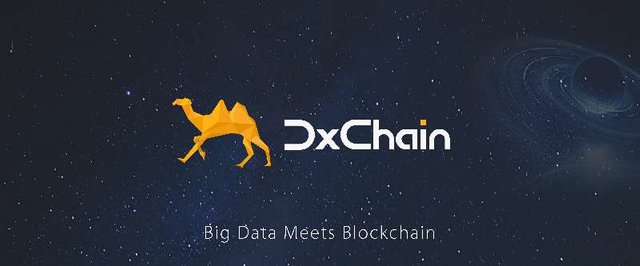Tencent: DxChain is committed to breaking through the bottleneck of Blockchain
On May 25, China’s most influential media Tencent has published an exclusive interview with the founder of DxChain Allan Zhang, talking about the importance of storage and computation in Blockchain’s development. Please refer down below for this interview.
(Tencent Tech published this article on May 25:http://tech.qq.com/a/20180525/034657.html)

DxChain is a Silicon Valley-based blockchain startup developing on-chain storage and computation to process large volumes of data. DxChain Founder Allan Zhang, as a serial entrepreneur, founded Trustlook, an information security company based on big data.
While in the actual operation of Trustlook, the cost of packaging and acquiring data is too high, Zhang discovered that the blockchain technology, featuring decentralization, multi-nodes, and distributed storage, can not just reduce the costs of data retrieval and storage, but also ensure that data will not be tampered or lost.
In the future, Trustlook is going to be the first app in DxChain.
DxChain this year introduced its “Chains-on-chain” architecture, which includes one master chain and two side chains for computation and storage respectively. The master chain is used to record events, such as transactions, while the side chains perform their duties, thus supplementing the blockchain’s limitations.

Read on for more from First Line’s conversation with Zhang:
Tencent: You mentioned that DxChain is aimed to solve the limitations of the blockchain. What are the limitations you specifically suggest?
Zhang: The blockchain has by far been mainly used for storing ledger data, not including the entire big data on the Internet, such as film productions, financial data, medical data, and DNA data. The problem of how these different types of data can be accommodated by the blockchain is precisely what we need to solve.
As long as the blockchain involves storage and computation for big data, even Bitcoin and Ethereum, the two widely-recognized applications based on blockchain, are still limited in many ways. They cannot deal with general-purpose computational problems, and fail to offer a practical data privacy protection mechanism.
To that end, we believe that there is a lack of real infrastructure in the blockchain world. If we want to make the whole blockchain work like a real Internet — developing distributed search engines, distributed tweets, Facebook and other ecological content — we must solve the problem of blockchain infrastructure, which is, in particular, the bottleneck in storage and computation. DxChain is committed to breaking through this bottleneck.

Tencent: How is DxChain’s economic/business model reflected on its “Chains-on-chain” architecture”?
Zhang: The master chain, which is similar to Bitcoin and Ethereum, is a chain that provides the complete ledger data in the whole chain. DSC is a storage chain focused on data storage, which is also the primary incentive in the first stage of our economic model. Billions of tokens on the DSC are used to reward participants who provide hard disk space, much like cryptocoin mining.
Another is the CSC (computation side chsotageain), which is an auxiliary chain of DSC. Since data in DSC is different from Internet data, you can’t access data as you want it. There is a specific charge for accessing each piece/point of data. We imagine in a valued Internet, you have to pay for storing or reading each piece/point of data. We call it the second incentive mechanism in our model, mainly for computation.
Tencent: How DxChain’s economic/business model can be integrated with the real economy in the future?
Zhang: First, DxChain is aimed to provide the world’s largest storage space for human beings. Meanwhile, we are going to build a supercomputer, which can be used to deal with computations of models, particularly data-intensive ones. While it might not be a tool for number-of-digits operations, this supercomputer is expected to be superiorly powerful in data-driven operation, which in my opinion is the most useful.
Second, we are going to reduce data costs for small and medium-sized enterprises significantly. In Silicon Valley, AI startups invest huge budgets into data. But with DxChain, these startups can save a significant amount of money on storage, bandwidth, computation and the labor cost. A startup only needs two or three engineers to do core algorithms instead of 20 or 30 people.

Tencent: As a Silicon Valley-based project, what is DxChain’s gene of Silicon Valley?
Zhang: We are a bunch of engineers and techies. DxChain does not have many gurus coming from the cryptocurrency community, and is not born with the so-called “genes of cryptocurrency”. We are just a technical team that gets funding and does our job.
Silicon Valley companies earn their reputation of being practical and realistic because the “impetuosity” does not belong to this place. Rome was not built in one day. So was Bitcoin. It has gone through a few years from the first line of code to an implementation. I think it takes time to make a thing really work out.

With regards to DxChain:
A Decentralized Big Data and Machine Learning Network Powered by a Computing-Centric Blockchain.
Medium:https://medium.com/dxchainnetwork
Website:http://dxcoin.io/
Telegram:https://t.me/dxchain